Links to our current full list of papers:
Recent Publication Highlights
Methods Highlights
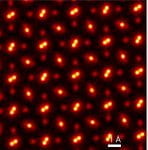
Electron ptychography achieves atomic-resolution limits set by lattice vibrations
“An ultimate resolution set by thermal vibrations of atoms is achieved by solving a long-standing electron microscopy problem”
Transmission electron microscopes use electrons with wavelengths of a few picometers, potentially capable of imaging individual atoms in solids at a resolution ultimately set by the intrinsic size of an atom. Due to lens aberrations and multiple scattering of electrons in the sample, the image resolution reached is 3 to 10 times worse. By inversely solving the multiple scattering problem and overcoming the electron-probe aberrations using electron ptychography, we demonstrate an instrumental blurring of under 20 picometers and a linear phase response in thick samples. The measured widths of atomic columns are limited by thermal fluctuations of the atoms. The method is also capable of locating embedded atomic dopant atoms in all three dimensions with sub-nanometer precision from only a single projection measurement.
Reprint: Z. Chen, Y. Jiang, Y.-T. Shao, M. E. Holtz, M. Odstrčil, M. Guizar-Sicairos, I. Hanke, S. Ganschow, D. G. Schlom, and D. A. Muller. “Electron Ptychography Achieves Atomic-Resolution Limits Set by Lattice Vibrations” Science 372, (2021): 826–831.
Writeups: Popular Science, New Scientist, Scientific American
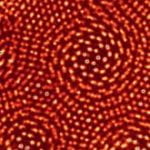
Electron Ptychography of 2D Materials to Deep Sub-Ångström Resolution
“Smaller than the space between atoms: The technology behind the highest-resolution microscope image”
A new detector technology lets us more than double the resolution of our electron microscope, resolving features 0.4 Angstoms apart. With a record resolution well below the shortest bond length, finding a good test object was a challenge. Twisted bilayers of two-dimensional molybdenum sulfide gave us the world’s smallest ruler – where the projected distance between atoms could be made arbitrarily small. Read about it here.
The Cornell press release is here, with an update for the recognition by the Guinness Book of Records!
Y. Jiang, Z. Chen, Y. Han, P. Deb, H. Gao, S. Xie, P. Purohit, M. W. Tate, J. Park, S. M. Gruner, V. Elser, and D. A. Muller. “Electron Ptychography of 2D Materials to Deep Sub-Ångström Resolution” Nature 559, (2018): 343–349.
Energy Highlights
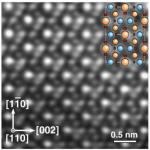
Synergistic Mn-Co catalyst outperforms Pt on high-rate oxygen reduction for alkaline polymer electrolyte fuel cells
Alkaline polymer electrolyte fuel cells are a class of fuel cells that enable the use of non-precious metal catalysts, particularly for the oxygen reduction reaction at the cathode. Here we report a Mn-Co spinel cathode that can deliver greater power, at high current densities, than a Pt cathode. In-depth characterization reveals that the remarkable performance originates from synergistic effects where the Mn sites bind O2 and the Co sites activate H2O, so as to facilitate the proton-coupled electron transfer processes. Such an electrocatalytic synergy is pivotal to the high-rate oxygen reduction, particularly under water depletion/low humidity conditions.
Y. Wang, Y. Yang, S. Jia, X. Wang, K. Lyu, Y. Peng, H. Zheng, X. Wei, H. Ren, L. Xiao, J. Wang, D. A. Muller, H. D. Abruña, B. J. Hwang, J. Lu, and L. Zhuang. “Synergistic Mn-Co Catalyst Outperforms Pt on High-Rate Oxygen Reduction for Alkaline Polymer Electrolyte Fuel Cells” Nature Communications 2019 10:1 10, (2019), 1–8.
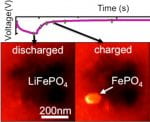
Nanoscale imaging of lithium ion distribution during in situ operation of battery electrode and electrolyte
“Imaging the nanoscale distribution of ions during electrochemical charging and discharging of a battery in a transmission electron microscope liquid flow cell”
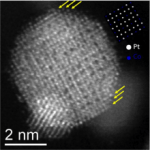
Structurally ordered intermetallic platinum–cobalt core–shell nanoparticles with enhanced activity and stability as oxygen reduction electrocatalysts
“A new atomically-ordered Pt-Co nanoparticle catalyst boosts the efficiency of the proton-exchange membrane fuel cells targeted for fuel-cell electric vehicles.“
Topological Textures
Materials by Design
Beyond Physics
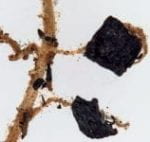
Biochar
“The Earth’s soils contain three times more carbon than is found in the atomsphere. The capacity of soil as a carbon sink is mediated by interactions between organic matter and mineral phases. Here we show these interfaces are not smoothly graded as previously thought, but contains disordered, micron-scale separated phases”
A. R. Possinger, M. J. Zachman, A. Enders, B. D. A. Levin, D. A. Muller, L. F. Kourkoutis, and J. Lehmann. “Organo–Organic and Organo–Mineral Interfaces in Soil at the Nanometer Scale” Nature Communications 11, (2020): 6103. DOI:10.1038/s41467-020-19792-9
News: “New imaging method views soil carbon at near-atomic scales”
“why do soil microorganisms thrive in the presence of biochar?”
T. Sun, B. D. A. Levin, J. J. L. Guzman, A. Enders, D. A. Muller, L. T. Angenent, and J. Lehmann. “Rapid Electron Transfer by the Carbon Matrix in Natural Pyrogenic Carbon” Nature Communications 8, (2017): 14873. DOI:10.1038/ncomms14873
News: “Researchers discover high-def electron pathways in soil”
“Black carbon is one of the most stable forms of soil organic matter. Here we explore its microstructure – soil is a collection of nanoparticles, not atomic mixtures”
C. H. Chia, P. Munroe, S. D. Joseph, Y. Lin, J. Lehmann, D. A. Muller, H. L. Xin, and E. Neves. “Analytical Electron Microscopy of Black Carbon and Microaggregated Mineral Matter in Amazonian Dark Earth” J. Microsc. 245, (2012): 129–139. doi:10.1111/j.1365-2818.2011.03553.x
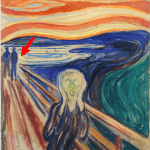
Using Science To Save Art
“Why the yellow colors in ‘The Scream’ are fading: Photodegradation of CdS nanoparticles in Munch’s paints”
B. D. A. Levin, , A. C. Finnefrock, A. M. Hull, M. G. Thomas, K. X. Nguyen, M. E. Holtz, U. Plahter, I. Grimstad, J. L. Mass, and D. A. Muller. “Revealing the Nanoparticle Composition of Edvard Munch’s The Scream, and Implications for Paint Alteration in Iconic Early 20th Century Artworks” arXiv: (2019): 1909.01933. Available at http://arxiv.org/abs/1909.01933



